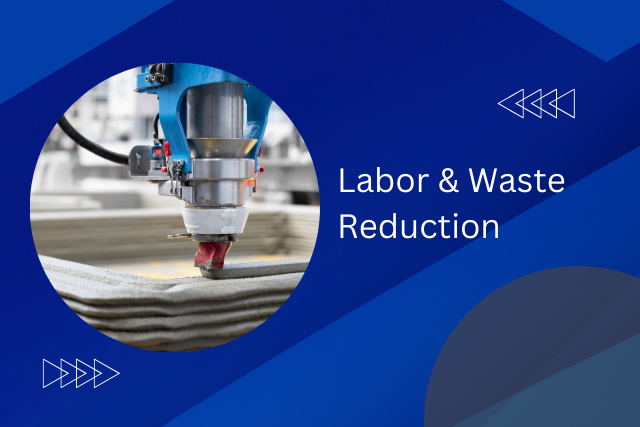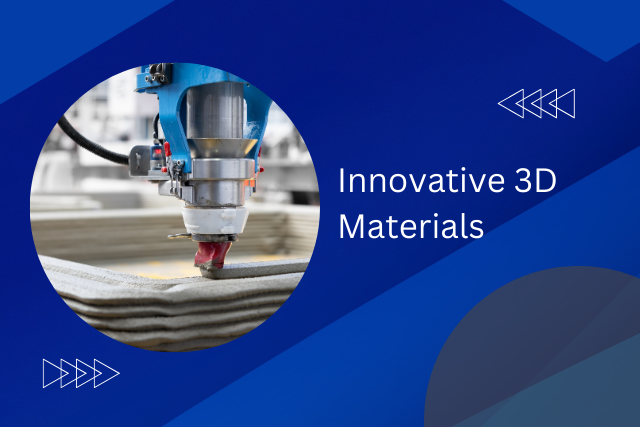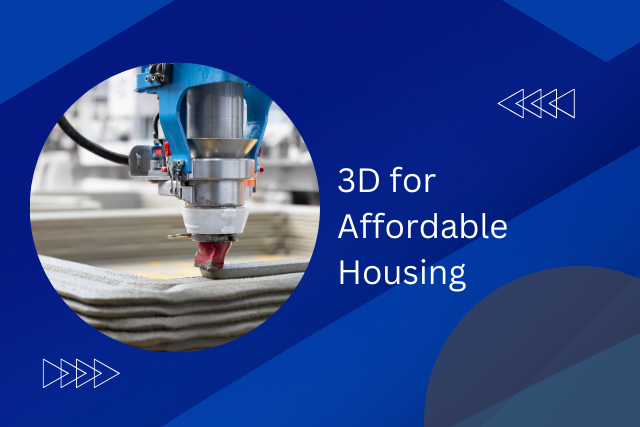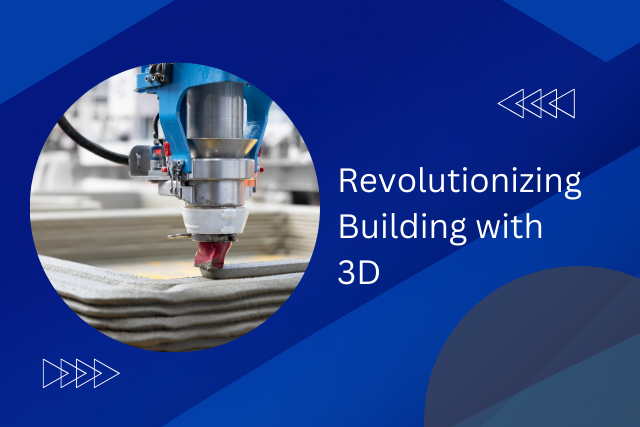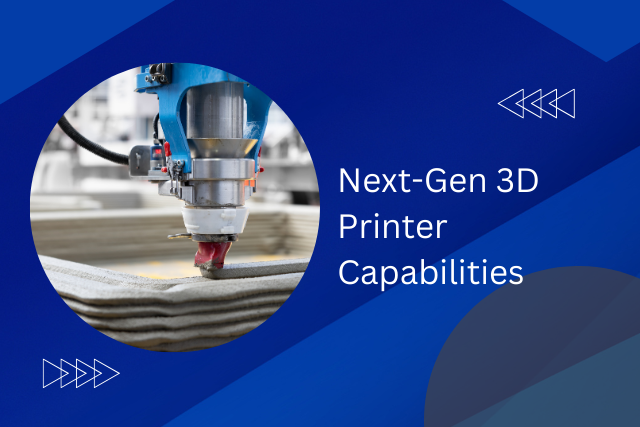The introduction of 3D printing in building construction is starting a big change for helping the environment. This new way of making buildings is not only making the construction process faster and easier but also greatly cuts down on waste and uses less energy. Using sustainable materials and having the ability to create designs more freely makes 3D printing a key method in reducing the harm we do to our planet through construction. Also, it helps to make the whole process of getting materials and building more efficient, which means fewer carbon emissions from transport. This supports the idea of a circular economy, where we try to reuse and recycle more. As we begin to use 3D printing more in architecture, we're left to wonder: How much can this technology change the way we impact the environment?
Revolutionizing Construction Efficiency
3D printing technology is changing how we build things, making it faster and easier to finish projects. This new way lets builders and designers create complex shapes and structures quickly, something hard to do before. With 3D printing, changes to designs are easier to make, and building can happen more smoothly. This helps finish projects faster, breaking away from old problems in the construction field.
Minimizing Waste Production
3D printing in building is a big step forward in cutting down waste and helping the planet. Unlike the old ways of building, which often create a lot of waste and harm the environment, 3D printing is much cleaner. It only uses materials where they are needed, so almost nothing is thrown away.
| Feature | Traditional Construction | 3D Printing Construction |
|---|---|---|
| Material Efficiency | Low | High |
| Precision | Variable | High |
| Waste Generation | High | Minimal |
| Customization | Limited | Extensive |
| Environmental Impact | Significant | Reduced |
This way of building is not only good for the earth but also gives people more freedom to design and use materials in new ways. The use of 3D printing in cutting down waste is more than just a smart move; it opens the door to building in ways that are better for our world. It gives those who make buildings and designs the chance to try new things without worrying about creating waste. This is a key part of moving towards a future where building is more sustainable.
Reducing Energy Consumption
Using 3D printing technology in building work helps make construction faster and uses less energy, which is good for the planet. This new way of building is exciting for people who want to move away from old, energy-using construction ways that can harm the environment.
3D printing in building uses just the right amount of energy, based on what materials are used and how big the project is. This means there is no waste of resources or energy like in traditional building methods. This careful use of energy helps in using fewer resources and lowering the harm to the environment. Also, making parts right at the building site or close by cuts down on the need to transport materials, which further reduces energy use and harmful emissions.
Bringing 3D printing into construction projects is a big step in taking care of our planet. It allows those who design and build to make new, high-quality buildings using much less energy than before. This change helps save important resources and leads to a future where being free and taking care of the planet can happen together, encouraging new ways of building that care for the environment.
Utilizing Sustainable Materials
Using sustainable materials, 3D printing technology is changing the way we build, making construction better for the environment. This method is great because it uses less energy and creates less waste compared to old ways of building with concrete and steel. 3D printing makes it possible to use recycled plastics, bio-based polymers, and local minerals, which helps reduce harmful effects on the planet. This new way of building is not only good for the earth but also meets the increasing demand for eco-friendly building options.
3D printing is smart because it can create strong materials that last a long time, meaning buildings don't need to be fixed or replaced as often. This is good for the environment. Also, 3D printers make things by adding layers of material, so they only use what is needed. This is much better than old building methods, which often waste a lot of materials and end up filling landfills.
Enhancing Design Flexibility
Transitioning to the aspect of enhancing design flexibility, 3D printing presents unparalleled opportunities in the realm of construction. This innovative method allows for customizable aesthetic options alongside efficient material use, paving the way for structures that are not only environmentally friendly but also uniquely tailored to individual preferences. By embracing this technology, architects and builders unlock a new level of creativity and sustainability in building design.
Customizable Aesthetic Options
One big plus of using 3D printing in building stuff is that it lets people change how things look a lot more. This is great for architects and their clients. They can now make buildings that really stand out and are different, just like the people or companies using them. With 3D printing, designers can do things that were hard or too expensive before. They can make cool designs and shapes on buildings. This makes buildings look better and helps clients show off their style or what their company is about through unique and green building designs.
Efficient Material Use
3D printing technology makes it easier to design things by using materials more carefully. This means we can build things in new and better ways, saving materials and helping the environment. With 3D printing, we only use material where we really need it, which cuts down on waste. This is important for keeping our planet healthy.
This technology lets us make complex shapes that we couldn't make before, showing how powerful 3D printing can be. It meets the need for green building methods that don't harm the earth. Also, it gives designers and architects the freedom to try out new ideas without being held back by old materials and ways of building.
Using 3D printing in construction is a big step towards working more efficiently. It brings together creativity and care for the environment, changing how we think about building things.
Streamlining the Supply Chain
Shifting the focus to streamlining the supply chain presents a transformative opportunity for the construction sector. Through minimizing material waste, 3D printing technologies champion a more sustainable and efficient approach to building creation. Additionally, enhancing logistics efficiency not only reduces environmental impact but also paves the way for a smoother, more cost-effective project execution.
Minimizing Material Waste
Using advanced 3D printing technologies, the construction industry can cut down on a lot of waste and make the whole process of getting supplies simpler. This new way of building things is really good for people who want to save money, protect the environment, and avoid complicated steps. With 3D printing, materials are added one layer at a time, which means almost no waste at all. In usual building methods, a lot of extra materials end up not being used and harm the environment. But, with 3D printing, only the needed amount of material is used. This saves resources and means we don't have to take as much from the Earth, making building cheaper and better for the planet. The future of building, with the help of 3D printing, is looking good for taking care of the environment and making things easier to do.
Enhancing Logistics Efficiency
Advanced 3D printing technologies help reduce waste and make the whole process of building things more straightforward. By using these new methods, we can make everything needed for construction in one place. This means materials go straight from being designed on a computer to being made into real things, without needing many different suppliers or lots of transport. This speeds up building projects and makes them less harmful to the environment because fewer cars and trucks are needed to move things around. Being able to print what is needed right where it is needed also means projects aren't held back waiting for materials to arrive. This makes managing building projects easier and gives more freedom to make changes. Moving towards these advanced ways of building will make construction quicker, greener, and more efficient.
Lowering Transportation Emissions
Using 3D printing to build houses is great for cutting down on transportation emissions because the materials needed are often made right where the building is happening. This smart way of building not only makes the construction process smoother but also helps a lot in reducing the carbon footprint that comes with old-school building methods. By making materials nearby, 3D printing gets rid of the need for big trucks that emit a lot of pollution, helping to make construction better for the planet.
Choosing 3D printing for building gives communities the power to build without having to rely on materials from far away. This means less dependence on outside sources and leads to a stronger way of building. Making materials close to where they are needed also allows for custom designs that match the local environment and needs, making sure buildings are both good for the earth and fit well in their location.
Looking ahead, the use of 3D printing to lower transportation emissions is a bright idea. This technology is not only good for the earth but also opens new possibilities in how we design and build, leading to a healthier planet.
Promoting Circular Economy Practices
3D printing in construction helps us use materials better and cut down on waste, making building more sustainable. This method is not only changing how we construct buildings but also helps the environment by reusing and recycling materials. Following the ideas of a circular economy, 3D printing in construction keeps materials in use as long as possible, gets the most out of them while they're being used, and then recycles them when they're no longer needed.
| Benefit | How 3D Printing Helps |
|---|---|
| Material Efficiency | Uses only what's needed, cutting down on extra stuff and waste. |
| Design Freedom | Makes it possible to create complex, efficient designs that can't be done with old methods. |
| Waste Reduction | Allows using recycled materials, and buildings can be made to be taken apart and recycled. |
| Innovation in Materials | Leads to new, eco-friendly materials that can be printed, helping the environment.
Using 3D printing in construction lets us try new things while using resources wisely. This mix of technology and being eco-friendly supports the circular economy and leads to a better, stronger future.
Conclusion
The arrival of 3D printing technology in building things is starting a big change for the better. It makes building faster and cleaner, cuts down on waste, uses less energy, and uses materials that are better for the planet. This cool new way of building is really good at reducing harm to the environment. It also makes it easier to come up with new designs, makes getting materials simpler, lowers the pollution from moving things around, and supports recycling and reusing things. Because of this, buildings made with 3D printing are a key way to help the environment and bring new ideas to how we make buildings.

